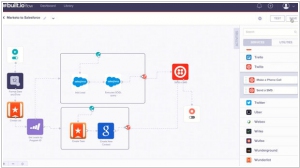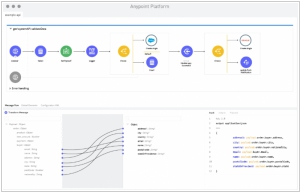Built.io vs MuleSoft
June 10, 2023 | Author: Michael Stromann
Built.io and MuleSoft are both integration platforms used to connect and streamline data and services across different systems and applications, but they differ in their approach and capabilities. Built.io is an integration platform as a service (iPaaS) solution that focuses on providing a visual, drag-and-drop interface for building integrations. It offers a user-friendly environment for designing and orchestrating workflows, APIs, and data mappings without the need for extensive coding knowledge. Built.io emphasizes simplicity and ease of use, making it accessible to a wide range of users. On the other hand, MuleSoft is an enterprise integration platform that offers a comprehensive set of tools and capabilities for building, deploying, and managing integrations. It provides a robust integration framework, extensive connectivity options, and advanced features such as API management, data transformation, and message routing. MuleSoft is designed for larger organizations with complex integration needs and offers a high degree of flexibility and scalability.
See also: Top 10 Cloud Integration software
See also: Top 10 Cloud Integration software
Built.io vs MuleSoft in our news:
2021. Salesforce announces new Mulesoft RPA tool based on Servicetrace acquisition
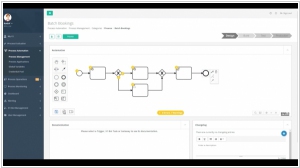
When Salesforce recently revealed its acquisition of German RPA vendor Servicetrace, many speculated that it could complement MuleSoft, a company purchased by the CRM giant in 2018 for $6.5 billion. MuleSoft, among its various capabilities, assists customers in constructing APIs for legacy systems, while Servicetrace offers automation solutions for such systems. As anticipated, the company has now announced the development of a new tool called MuleSoft RPA, combining the functionalities of MuleSoft and Servicetrace. The acquisition of Servicetrace was finalized on September 2nd, and Salesforce is swiftly integrating it into relevant areas across the organization, with MuleSoft integration being a key focus.
2016. Built.io launches an IFTTT for business users
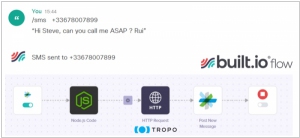
Built.io has been providing an integration tool called Flow, which has empowered technical users such as IT admins and developers to build intricate, multi-step integrations effortlessly using a drag-and-drop interface. However, the company has recently unveiled a more simplified version of Flow, specifically tailored for business users seeking to establish IFTTT-like connections among applications like Cisco Spark, Slack, Gmail, Marketo, and Salesforce. To differentiate between the two services, the previous iteration of Flow is now referred to as Flow Enterprise, while the new version is branded as Flow Express. This distinction clarifies the varying capabilities and target users of each offering.
2016. Built.io Flow makes building enterprise integrations easier
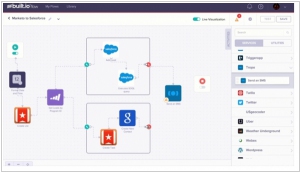
Built.io is set to launch a significant update to its enterprise integration service, Flow, aimed at simplifying the process of creating more robust integrations for businesses. Flow is a user-friendly tool that utilizes a drag-and-drop interface to build enterprise integrations. It combines the capabilities of Yahoo Pipes (R.I.P.) and IFTTT to connect services such as Salesforce and Marketo, enabling streamlined automation of sales processes within organizations. It's important to note that integration remains a prominent aspect of the enterprise landscape, with many development firms specializing in assisting clients in connecting various third-party services. The Built.io team asserts that their solution can significantly reduce the time required for these integrations, transforming a process that typically takes weeks into a matter of hours.

